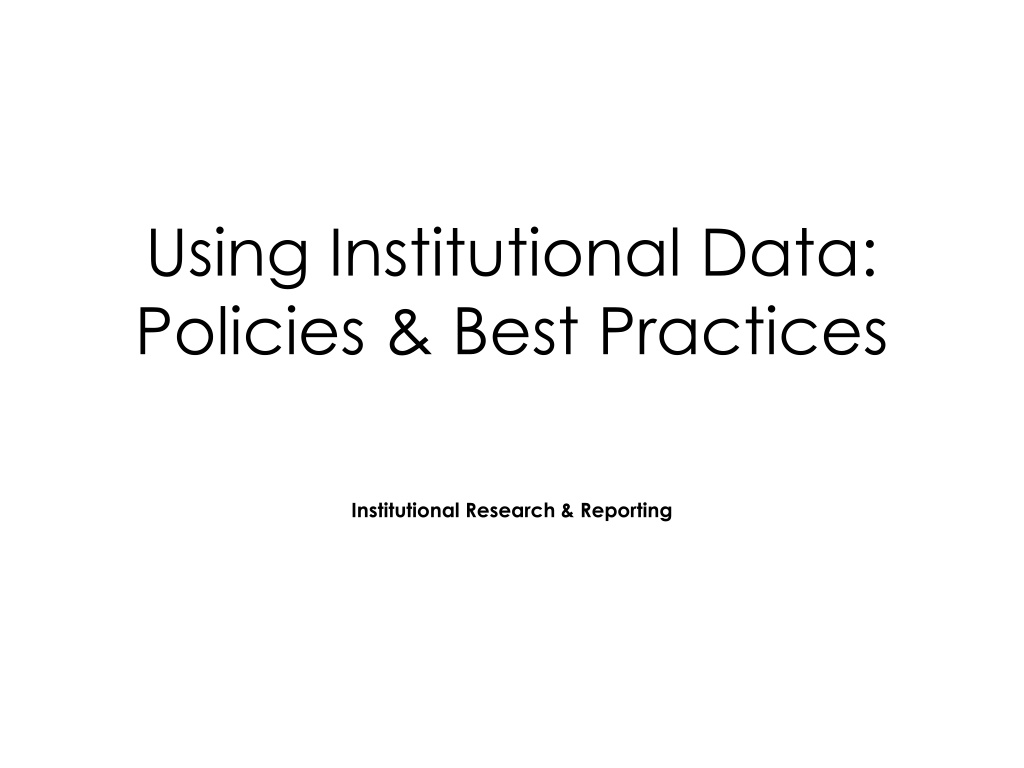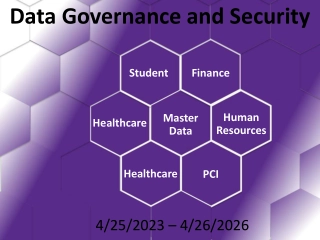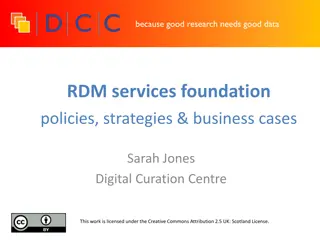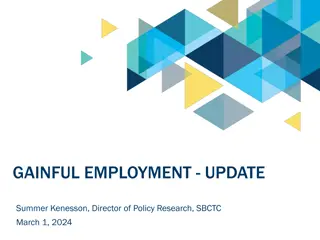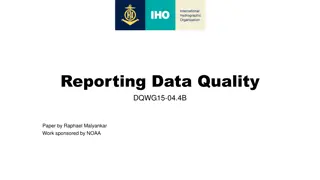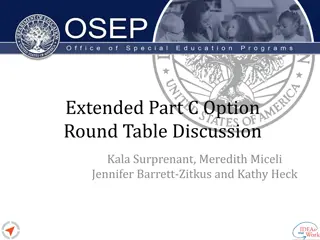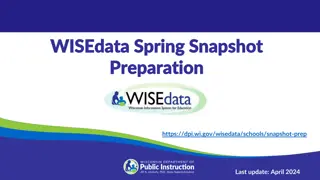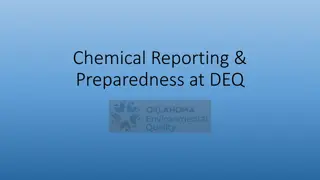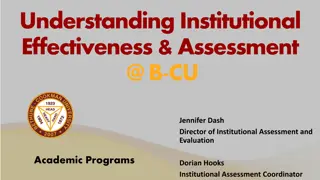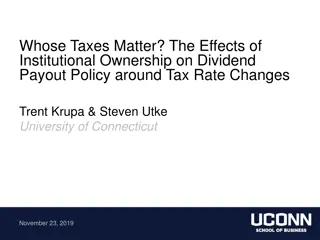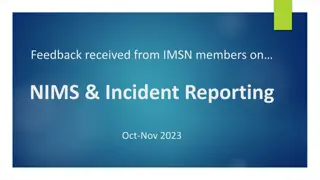Understanding Institutional Data: Policies & Best Practices in Research Reporting
Explore the importance of institutional data policies, best practices in research reporting, privacy considerations like FERPA, and the distinctions between official and operational data. Learn about census dates and the different outputs from Banner ODS and IRR to ensure accurate reporting.
Download Presentation

Please find below an Image/Link to download the presentation.
The content on the website is provided AS IS for your information and personal use only. It may not be sold, licensed, or shared on other websites without obtaining consent from the author. Download presentation by click this link. If you encounter any issues during the download, it is possible that the publisher has removed the file from their server.
E N D
Presentation Transcript
Using Institutional Data: Policies & Best Practices Institutional Research & Reporting
IRR Online Resources www.ou.edu/irr Contains reports suitable for public distribution Follow @OU_IRR for updates to the website and reporting tips. Request access to the IRR SharePoint site (share.ou.edu/sites/irr) for additional reports that are not for public distribution. Privacy considerations FERPA: protecting our students Open Records: think about potential issues before creating new reports Storing and sharing person-level detail files
Official or Operational? Operational Data Also known as the ODS or Cognos or oZONE Is (usually) no more than 24 hours old Is a copy of the transactional system Should be used whenever current status is important, such as advising, course scheduling, etc.
Official or Operational? Official Data Is a snapshot of data as of a point in time, according to a predetermined schedule Is currently only accessible through IRR May differ from operational system if corrections are warranted Is set up for reporting needs, using established definitions OU, state, federal that take important nuances into account Should be used whenever reporting to the outside world and when comparing apples to apples is most important: best example, trend analyses
Census Dates Each snapshot that IRR takes is more generally referred to as a census. What are the standard census dates IRR uses? Official Reporting Date (ORD) For student data, this is after the add/drop period has ended; in fall/spring it is the first working day after three full weeks of classes, summer is more complicated so ORD comes later at more like the 8thor 9thweek For HR data, this is the first working day on or after November 1st(after October payroll) End-of-Semester (EOS) After all classes have ended and all grades have been submitted significant because Law gets 30 days to submit their grades, so there can be quite a lag between classes ending and the EOS snapshot Only applicable to student data
Same Original Source, Different Outputs Banner ODS IRR IRR frozen/ snapshot data Banner reporting tables
So How Do I Know What to Use? Will the data (potentially) be seen by deans/provost/other administrators? Will the data be shared with external agencies, such as program accreditors or media (especially the student newspaper)? Is it trend data? If the answer to any of these is yes, then you need to either be using official data from IRR or have checked your methodology with IRR.
So How Do I Know What to Use? Are you pulling the data for day-to-day operational use? Are you needing information on students that reflects status as of today, with all recent record changes included? Sounds like operational data might be a better fit. It s easier to identify what does have to be official data than what doesn t.
Step by Step 1. Write down the question you re trying to answer. (This may seem obvious, but a lot of people skip this step.) 2. Think about what data you might use to answer that question. (This is where the official vs. operational question is usually addressed.) 3. Bounce your ideas off a peer. (Even the most experienced report writers have to do this. You might not have thought of additional fields you need, or you might need to clarify rules about a kind of calculation. Or a report that does that might already exist in the common folders. It pays to check.)
Step by Step 4. Sketch out a sample output table. (This helps remind you of additional details you want to include.) 5. Think about how you might be able to check your results. If you re not sure, give that friendly peer another call. (If you don t have any idea of what the right answer looks like, you can t evaluate the results you get.) 6. Write the report in Cognos. (Finally!)
List or Summary? Lists are good when: Your reporting need calls for person-level detail You want to see more clearly what your query is returning, while you re writing/refining your summarized query Summaries should be used every other time. Why pull and summarize person- level detail when the query can roll it up for you?
Notes are Necessary Of equal importance to data quality: clear, consistent, and complete notes and labeling When were the data pulled? Where did the data come from? Who/what is included/excluded, and why? What kinds of calculations/transformations have been done with the data, if any?
Susannah Livingood 325-3681 slivingood@ou.edu @OU_IRR www.ou.edu/irr
